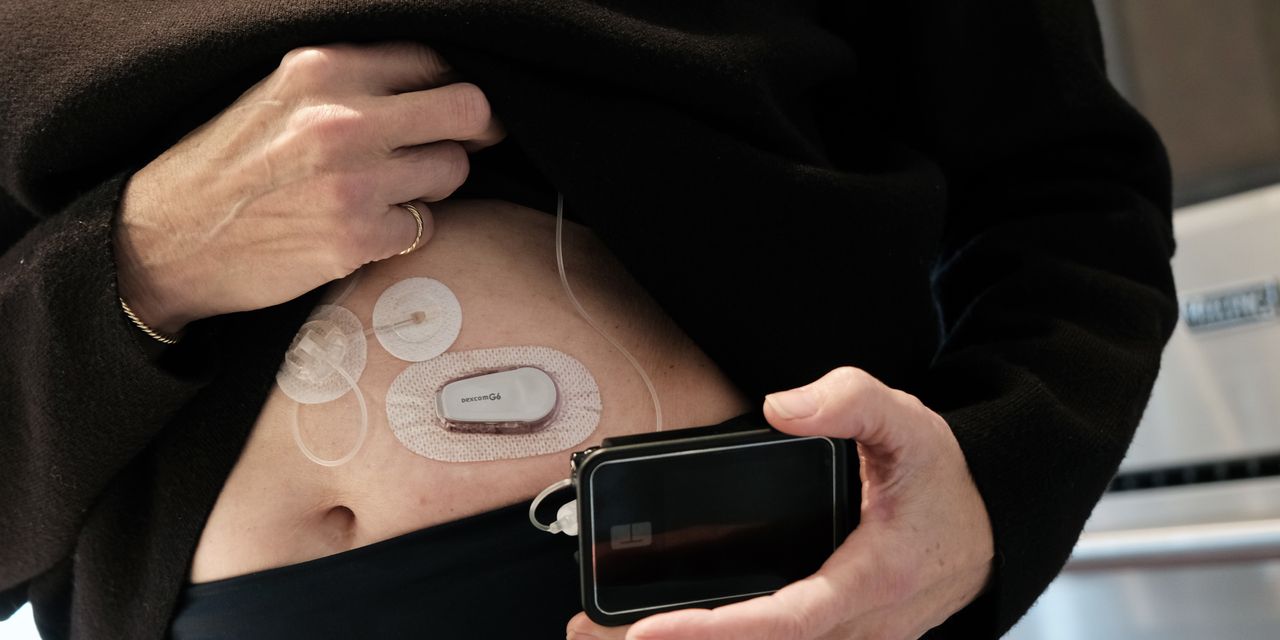Diabetes device stocks that have been crushed in recent months by an Ozempic-fueled weight-loss drug frenzy have now been punished enough, some analysts say.
The market’s enthusiasm for Novo Nordisk’s
NVO,
Ozempic and Wegovy, Eli Lilly’s
LLY,
Mounjaro, and other next-generation weight-loss and diabetes treatments has translated into an ugly few months for makers of diabetes devices such as insulin pumps and continuous glucose monitors. Shares of major players in this niche, DexCom Inc.
DXCM,
and Insulet Corp.
PODD,
were among the worst healthcare performers in the S&P 500 in the third quarter, dropping 27% and 45%, respectively.
The negativity has been driven largely by the concern that widespread use of GLP-1 drugs like Ozempic and Wegovy will mean less insulin use and more stable blood glucose levels among type 2 diabetes patients, shrinking the market for diabetes devices. Shares of diabetes device makers took another tumble Wednesday, after clinical trial results showed that tirzepatide, which Lilly markets under the brand name Mounjaro, may be more effective than fast-acting insulin in treating uncontrolled type 2 diabetes.
Some analysts are starting to see bargains among the stocks beaten down by the GLP-1 phenomenon. While there are still near-term risks, the continuous glucose monitoring company DexCom, insulin pump maker Insulet, and Inspire Medical Systems Inc.
INSP,
which makes a sleep apnea device, “are all very attractively valued and should see share price appreciation” over the next year or more, J.P. Morgan analysts wrote in a note Wednesday.
The GLP-1 drugs aren’t as catastrophic for device makers as the share price declines would suggest, some analysts say, in part because the type 1 diabetes market is relatively insulated from the GLP-1 effects, and there’s still plenty of room for growth in the type 2 diabetes market, even as more of these patients start taking Mounjaro and similar treatments. GLP-1 costs and side effects are also hurdles for patients looking to start and stay on these drugs, analysts say, potentially diminishing their longer-term impact.
Some device makers in recent weeks have also sought to temper the GLP-1 fears. In an investor presentation last month, for example, DexCom noted that type 2 diabetes patients’ use of continuous glucose monitoring increases after they start taking GLP-1 drugs. Abbott Laboratories
ABT,
shared similar data in late September, saying the number of people using its FreeStyle Libre continuous glucose monitor while also taking GLP-1 drugs has increased significantly over time and that adherence to the sensor is higher among people taking the drugs.
The pullback in DexCom shares “represents a good buying opportunity,” Oppenheimer analysts wrote in a mid September report, saying use of continuous glucose monitoring should continue to increase. Raymond James analysts also wrote in a mid September report that DexCom is their favorite diabetes play, as continuous glucose monitoring “can cohabitate with GLP-1s” and upward revenue revisions can still drive the stock.
DexCom also released new study data this week at the European Association for the Study of Diabetes annual meeting in Hamburg, showing that real-time continuous glucose monitoring is linked with greater reductions in blood-sugar levels compared with self-monitoring blood glucose over seven years and that further blood-sugar reductions were achieved when the continuous glucose monitor is connected to an automated insulin delivery system.
While DexCom “could be the first stock released from ‘GLP jail,’” Jefferies analysts wrote in a note Monday, other device makers also look attractive. The analysts upgraded Insulet stock to buy from hold, given its valuation after the GLP-1 meltdown and the company’s disposable patch pump notching market-share gains due to its convenience for patients.
After accounting for some longer-term reductions in the number of patients progressing to insulin use, the Jefferies analysts also maintained their buy rating on insulin pump maker Tandem Diabetes Care Inc.
TNDM,
With a large population of diabetes patients globally still not using pumps, both Tandem and Insulet have strong growth potential, the analysts wrote.
Read the full article here













Leave a Reply